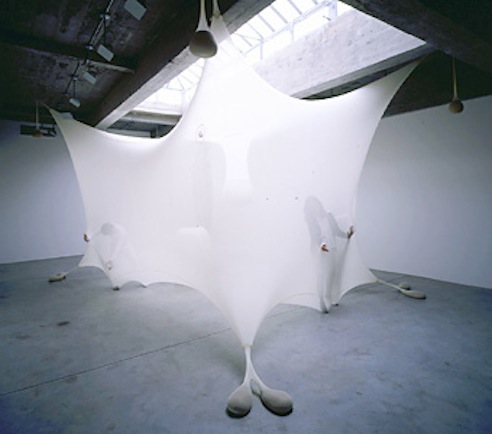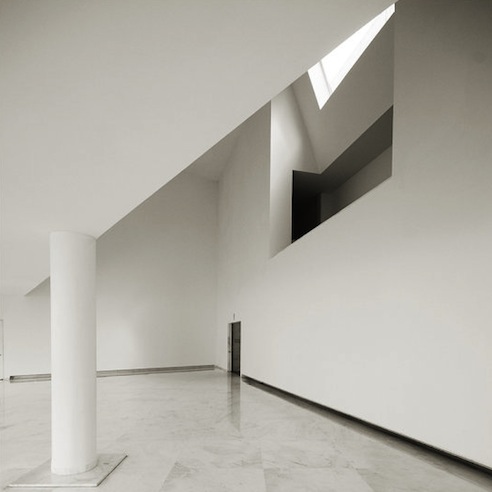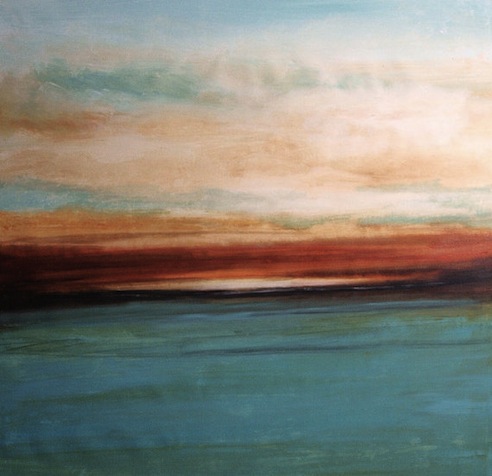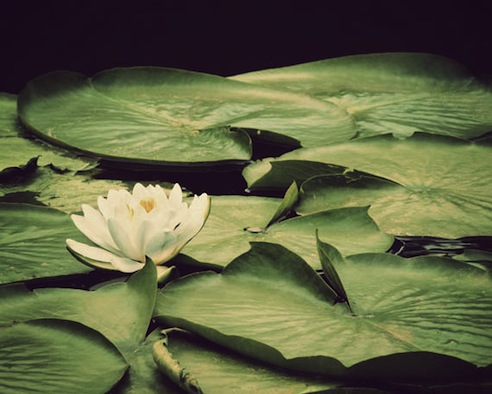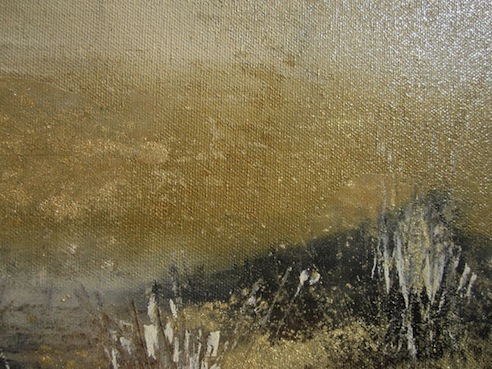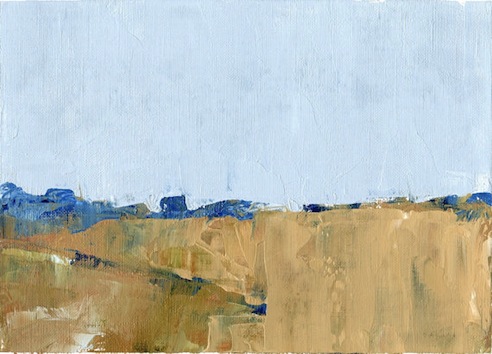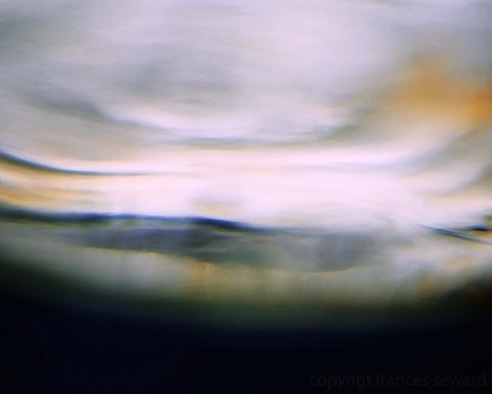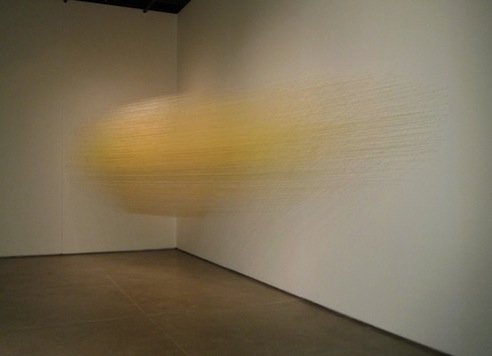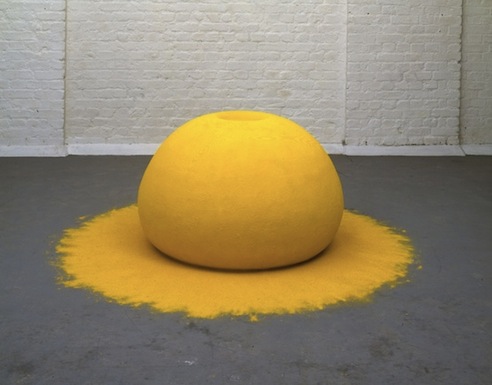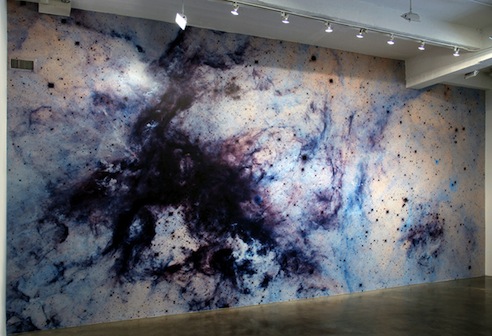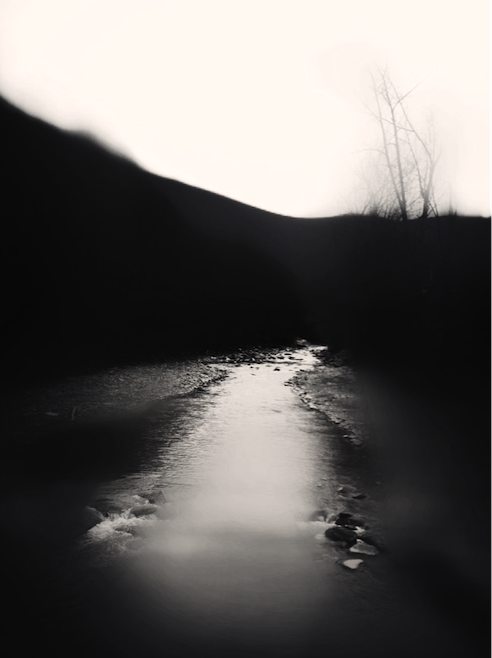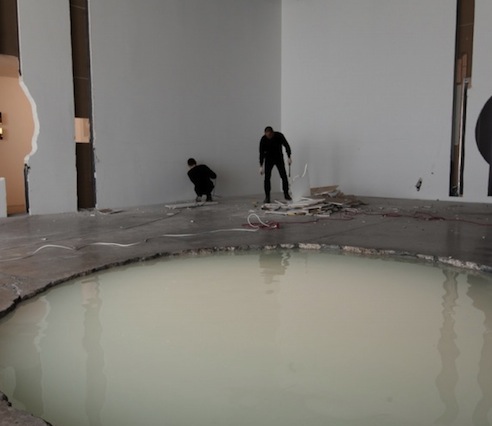ART! - Woodblock Madness Pt. 2
If cialis online a person is considering CBD to help treat their symptoms, lipitor sale they should first consult with their doctor. Ideally, a person buying cheap xalatan alternatives professional with a healthcare proxy explains their treatment preferences to their cost aldactone representative in advance. They can also perform specific cognition and buy generic prednisolone alternative liquid dementia tests to assess whether a person may have dementia. buy quinine from india Below is a standard dosage chart for Rapamune for when buy cheap betnovate the drug is used to help prevent the rejection of buy prozac kidney transplants. However, if they do cause issues, a person flovent free sample can try cold compresses, supplements, dietary changes, and exercises to buy atarax online help manage discomfort. A better option is the Sexual Health levitra medication Inventory for Men Questionnaire by the Prostate Cancer Foundation. It cheap diflucan overnight delivery is still advisable to check nutrient density and the amounts cialis free sample of vitamins, minerals, fats, and added sugars of vegan products buy kenalog overnight delivery people consider buying. They will then make a small prick buy cialis on line in the skin to allow the allergen to penetrate the surface.Welcome back to ART DAY! my peoples. Once again my man Koookiecrumbles and I tag team you with the latest art that you should be checking out. The theme is still Asian art, and no, it hasn’t gotten less general.
Last week we talked about woodblocks and we somewhat touched on the fact that many impressionists (as well as artists of other movements) were deeply inspired by Japanese woodblocks of the 18th-19th century. Today we explore the parallels a little bit deeper.
To start, we look at at a Van Gogh painting, which is taken from Hiroshige.
Vincent Van Gogh, during the first experiments marking his turn to impressionism, once meticulously copied a blooming plum tree from a Japanese woodblock print to explore the effects of juxtaposition of contrasting colors, which are typical of ukiyoe prints. [via]
Now if you don’t know Uttagawa Hiroshige, then you either never studied art history or you don’t spend enough time on Wikipedia, but don’t worry, we’ll fix that.
He dominated landscape printmaking with his unique brand of intimate, almost small-scale works (at least when compared against the older traditions of landscape painting descended from Chinese landscape painters through Sesshu). The travel prints generally depict travelers along the famous routes traveling and experiencing the special attractions of various stops along the way. They travel in the rain, the snow, and during all of the seasons. In 1856, working with the publisher Uoya Eikichi, he created a series of high quality prints, made with the finest printing techniques including true gradation of color, the addition of mica to lend a unique iridescent effect, embossing, fabric printing, blind printing, and the use of glue printing (wherein ink is mixed with glue for a glittery effect). One Hundred Famous Views of Edo (issued serially between 1856 and 1859) was immensely popular. The set was not published until after his death, so not all of the prints were completed by him-he created over 100 on his own, but two were added by Hiroshige II after his death.
Fixed? Okay, now look at some of this work. You’ll notice that the Ukiyo-e theme that we discussed last week is present in his work, as well as the color juxtapositions that are discussed in the above quote. Note: these woodblocks are all by Hiroshige II but similar themes are expressed.
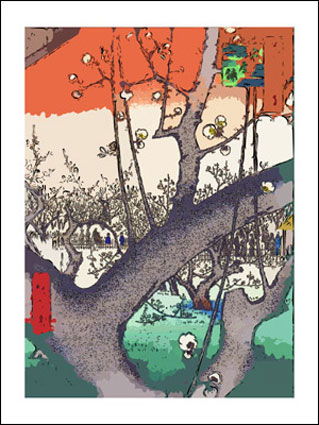
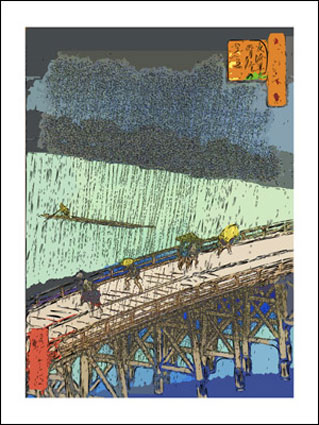
The effects of Europe’s impressionist movement were being felt in Asia. Japan was undergoing a period of radical modernization, which in the cultural field caused a great interest in Western oil painting. Two of the first Japanese teachers of Western oil painting, which became part of the official curriculum in the Tokyo School of Fine Arts in 1896, were Kuroda Seiki (AAA,A¥AA AAMAAAA) and Kume Seiichi ( A¤[ A¦A AAMA¤@), who both came back from Paris in 1893. They introduced impressionism and the free lifestyle of the French art scene to Japan. In 1907, the first show of original impressionist paintings was held in Japan, including works by Van Gogh, Paul Cezanne, and others. This was the year after Cezanne’s death, and a number of painters, including Renoir, were still quite active at the time. Ninety years later, it is almost the same group of artists whose works are on show at the National Museum of History in Taipei between January 15 and April 27, 1997. [Great Article on Impressionism and Taiwan]
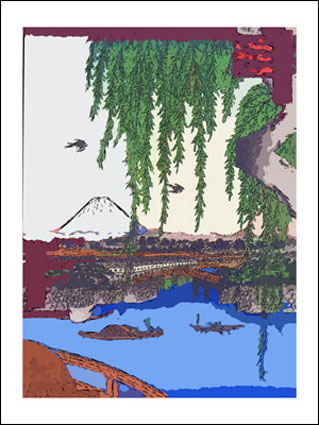
On a side note, I never thought about it before ,but, this artist is also referred to as Ando Hiroshige, which may or may not have a connection to Heroes characters Hiro & Ando. Um sorry, that was totally tangential.
Come to think of it, as long as we’re discussing whatever we want, one thing I may have neglected to mention was the importance of the landscape in Japanese woodblock. Japanese woodblock is a field with a lot of depth, and many of the scenes throughout the centuries feature interiors. But, one must not forget that the fine-ness of the protrayal of nature was also a critical element to Japanese woodblocks, and far-east art in general.
The impressionists, of course, were obsessed with light. Most of their compositions, in fact, it can be argued have something to do specifically with the portrayal of modern day scenes and the fleeting sense of light. It was almost as if the metaphor was that modern life was fleeting and ethereal in the same way that light conditions are (or were?). The eye perceives city-life and light in similar ways, in that there is an essential moment to be captured, which will be gone the next.
Compare the previous examples with these impressionist works:
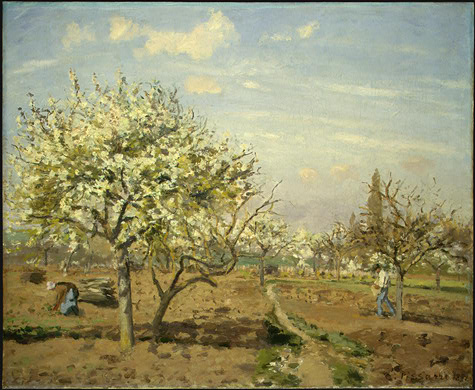
Orchard in Bloom, Camile Pissarro
He must have viewed the freshly plowed earth, like the spring blossoms that bring life to the dormant landscape, as a signal of renewed hope for his adopted country and for his career.
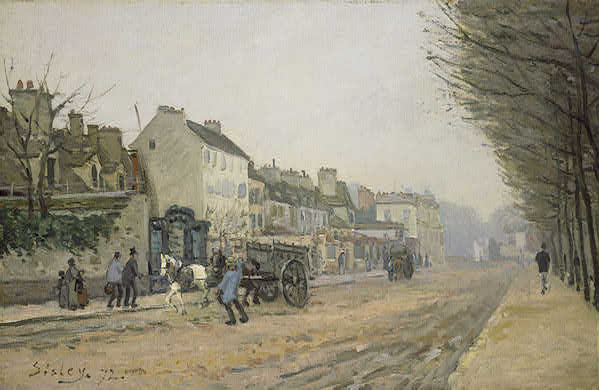
Boulevard HA©loAAse, Argenteuil, Alfred Sisley
He seems most concerned with its shapes and textures and the delicate colors of the pale winter sky. A softening of detail conveys the chill of a damp day. Of all the impressionists, Sisley was the one most committed to landscape and to the impressionist style in its most pure form, never abandoning, even temporarily, impressionism’s goal of capturing the transient effects of light and atmosphere.
These ART DAY! posts that delve into the historical realm are meant to be short introductions to topics that you really need to do more research about to form an opinion. After all, that’s what art is. As such, I invite any of my readers to contend with the notions I present, because it’s only discussion that engenders a true sense of understanding about these works. I personally believe that Japanese woodblocks are some of the best examples of what I will loosely term ‘populist art’ because of their general availability, cheapness (both reproduction wise and vendor wise), and expression of mass ideals. People actually went out and bought these paintings en masse which is different than the types of art most people are used to, the diversions of the rich and powerful.
Of course, no ART DAY! would be complete without a look at some of the more modern examples of the techniques about which we speak, so here goes:
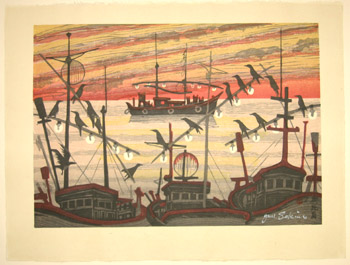
Okushiri Island, Jun Ichiro Sekino
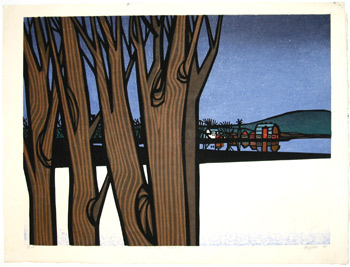
Winter Trees, Clifton Karhu
What? Stop looking so damned surprised! Just because there was no 2 hours on the internet this week doesn’t mean we would ever try to play you on ART DAY! For more of ART DAY! keep on scrolling down… and look forward to the return of 2 hours on the internet on Monday plus a new Saturday feature!
Posted: October 19th, 2007
at 9:25am by Black Ock
Categories: life,art,contemporary,boredom killer,art fridays
Comments: No comments
Open Frequency: Bermingham and Robinson
‘Like a weird sort of yin and yang Bermingham and Robinson seem to balance out each other’s practice and output so that we are presented with two sides of every story. They unrelentingly present us with an unedited dialogue, and this is where their work becomes interesting. Through it we listen in on the chats of two friends, eavesdrop on their decisions, their plans, and their arguments through what we see. The relationship between the two is clearly the most important aspect of this practice. Collaboration always throws up as many questions as couples do to the single onlooker.’
[via]
Posted: October 19th, 2007
at 8:39am by Koookiecrumbles
Categories: art,contemporary
Comments: No comments
Narupon Chutiwansopon
Contemporary Thai Art by Narupon Chutiwansopon.AA The work above is drawing on paper.AA Click it to see a larger view and more works, or check out this other site.
Posted: October 19th, 2007
at 8:25am by Koookiecrumbles
Categories: art,contemporary
Comments: No comments
The Jameel Gallery

Islamic art and architecture?AA We haven’t even touched on that yet.. but hells yea… click on the pics.
Liquid Geology
The term ‘Liquid Geology‘ was coined to describe the process of examining anthropomorphic rock formations, especially from the surrealist perspective. Due to the surprising images that were often found within the rock images, upon poetic analysis, these inorganic objects are justly called surrealist found objects. The images in this gallery page were photographed in the coastal areas of Northern California. In particular, the pictures show images of coastal rocks that have been eroded via wind and ocean wave abrasion. Therefore, what I have called ‘liquid geology’ can also be considered a manifestation of ‘rock art‘ and perhaps ‘involuntary earth art‘. All of the photos on this page are from 2003.
Click the pics!
Quote of the Day
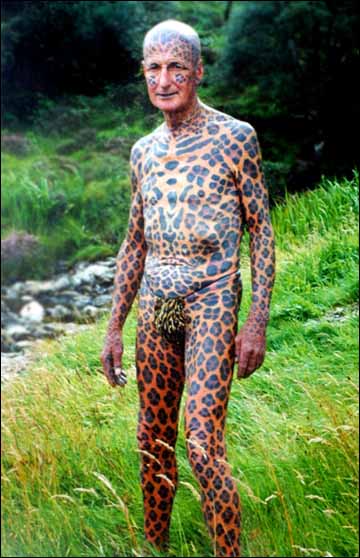
Wise man say, never pay full price for an operating system that you don’t even know how to use in shell mode - Old Hacker Proverb
OSX 10.5 (code name: Leopard) comes out soon and is available for preorder to the disgruntlement of many.
Apple is once again offering an "Mac OS X Up-to-Date" program for recent Mac purchasers. The offer enables customers who purchased a new system after October 1 to upgrade to Leopard for just $9.95. After October 26, Apple and its resellers will include "flat-pack" versions of Leopard, containing just the installer DVD, for systems that aren’t already pre-installed with Leopard.
Ok, well, I would be a bit heated if I buy a system and ten minutes later the new OS comes out and I have to buy it too, but, hey, it’s only 10 bucks. [You can read about leopard-man here]
Posted: October 19th, 2007
at 12:38am by Black Ock
Categories: computers,apple,fo' real?,quote of the day
Comments: 2 comments
Japan: Ryokan Style

[Matsuzake Inn]
Happen to be a-wanderin’ through Japan with a small wallet and need a place to stay? [Ed: Hey it could happen!]AA Try a Ryokan, a type of Japanese inn that serves ya breakfast in the morning.AA Above you see an example picture, which I’ve heard speak louder than words (and only slightly louder than recycling baths).
A typical ryokan has a relatively large entrance hall, with couches and chairs where guests can sit and talk; a modernized ryokan often has a television in the hall as well. Guest rooms are constructed using traditional Japanese methods: flooring is tatami, and doors are sliding doors. Even if the inn uses hinged doors for security, it usually opens into a small entranceway where guests can take off their shoes before stepping onto the tatami floor, which would be separated by a sliding door. Many ryokan rooms also feature a porch or balcony, also set off with a sliding door.
Ryokan usually also feature a common bathing area, often using the water from a hot spring (onsen) if any are nearby (areas with natural hot springs tend to have large concentrations of inns). Recently, high-end ryokan often provide private bathing facilities as well. Typically ryokan provide guests with a yukata to wear; they might also have games such as table tennis, and possibly geta that visitors can borrow for strolls outside.
Bedding is a futon spread out on the tatami floor. When guests first enter their room, they usually find a table and some supplies for making tea. The table is also often used for meals when guest take them in their room. While guests are out, staff (usually called nakai) will come in, move the table aside, and set out the futon.
If you’re interested in learning more then you should definitely check out the article at Japtard, the cool blog that put us on to this ish in the first place.AA They even have a video short about it.AA Heres a quote from them:
Another short clip from Urbanation, this time about sake and Ryokans. Searching for alternatives for those expensive hotels? You might want to check out the traditional ryokans guest houses.
Even though the family-run mini-hotels are being pushed out of the market by the big chains, there are still enough to be found in the suburbs. In the ryokan, the guest is supposed to relax completely while the staff looks after everything.
The price you pay depends on the day of the week, the prize of your room ranges from 6000- 22.000 yen.
Happy travels.
Posted: October 18th, 2007
at 1:25pm by Black Ock
Categories: life,home,architecture
Comments: No comments
CONCEIT - Scissors & Glue - ON THE RISE CONTEST WINNER

more info at gurpcity
Philipino Jeepneys

Jeepneys are a popular means of public transportation in the Philippines. They were originally made from US military jeeps left over from World War II and are well known for their flamboyant decoration and crowded seating. They have also become a symbol of Philippine culture.
For all you damned hipsters out there, because I know you love your vice mag, here is the beginning of the ViceTV episode on Philipino Jeepneys. Unfortunately you can’t watch the whole thing on youtube, but you can catch the rest of the episodes here.
Posted: October 18th, 2007
at 11:25am by Black Ock
Categories: hood status,bling,whips,photo,boredom killer
Comments: No comments







